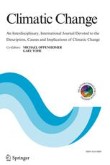Abstract
Background
There has been a dramatic increase in worldwide health care spending over the last several decades. Operative procedures and perioperative care in the USA represent some of the most expensive episodes per patient. In view of both the rising cost of health care in general and the rising cost of surgical care specifically, policymakers and stakeholders have sought to identify ways to increase the value—improving quality of care while controlling (or diminishing) costs. In this context, we reviewed data relative to achieving the "value proposition" in the delivery of gastrointestinal surgical care.
Methods
The National Library of Medicine online repository (PubMed) was text searched for human studies including "cost," "quality," "outcomes," "health care," "surgery," and "value." Results from this literature framed by the Donabedian conceptual model (identifying structures, processes, and outcomes), and the resulting impact of efforts to improve quality on costs.
Results
The relationship between quality and costs was nuanced. Better quality care, though associated with better outcomes, was not always reported as concomitant with low costs. Moreover, some centers reported higher costs of surgical care commensurate with higher quality. Conversely, higher costs in health care delivery were not always linked to improved outcomes. While higher quality surgical care can lead to lower costs, higher costs of care were not necessarily associated with better outcomes. Strategies to improve quality, reduce cost, or achieve both simultaneously included regionalization of complex operations to high-volume centers of excellence, overall reduction in complications, introducing evidence-based improvements in perioperative care pathways including as enhanced recovery after surgery (ERAS), and elimination of inefficient or low-value care.
Conclusions
The relationship between quality and cost following gastrointestinal surgical procedure is complex. Data from the current study should serve to highlight the various means available to improve the value proposition related to surgery, as well as encourage surgeons to become more engaged in the national conversation around the Triple Aim of better health care quality, lower costs, and improved health care outcomes.






